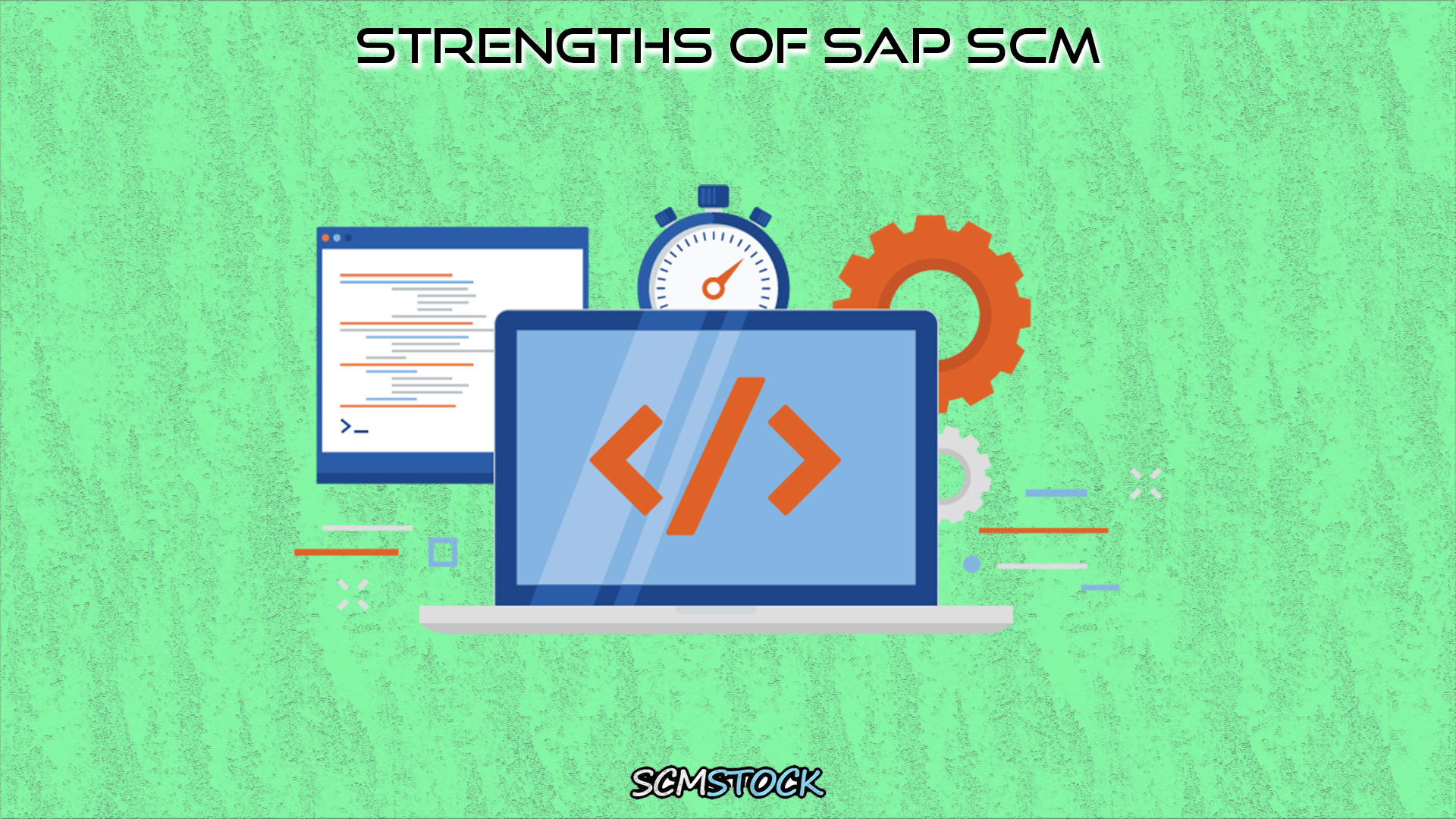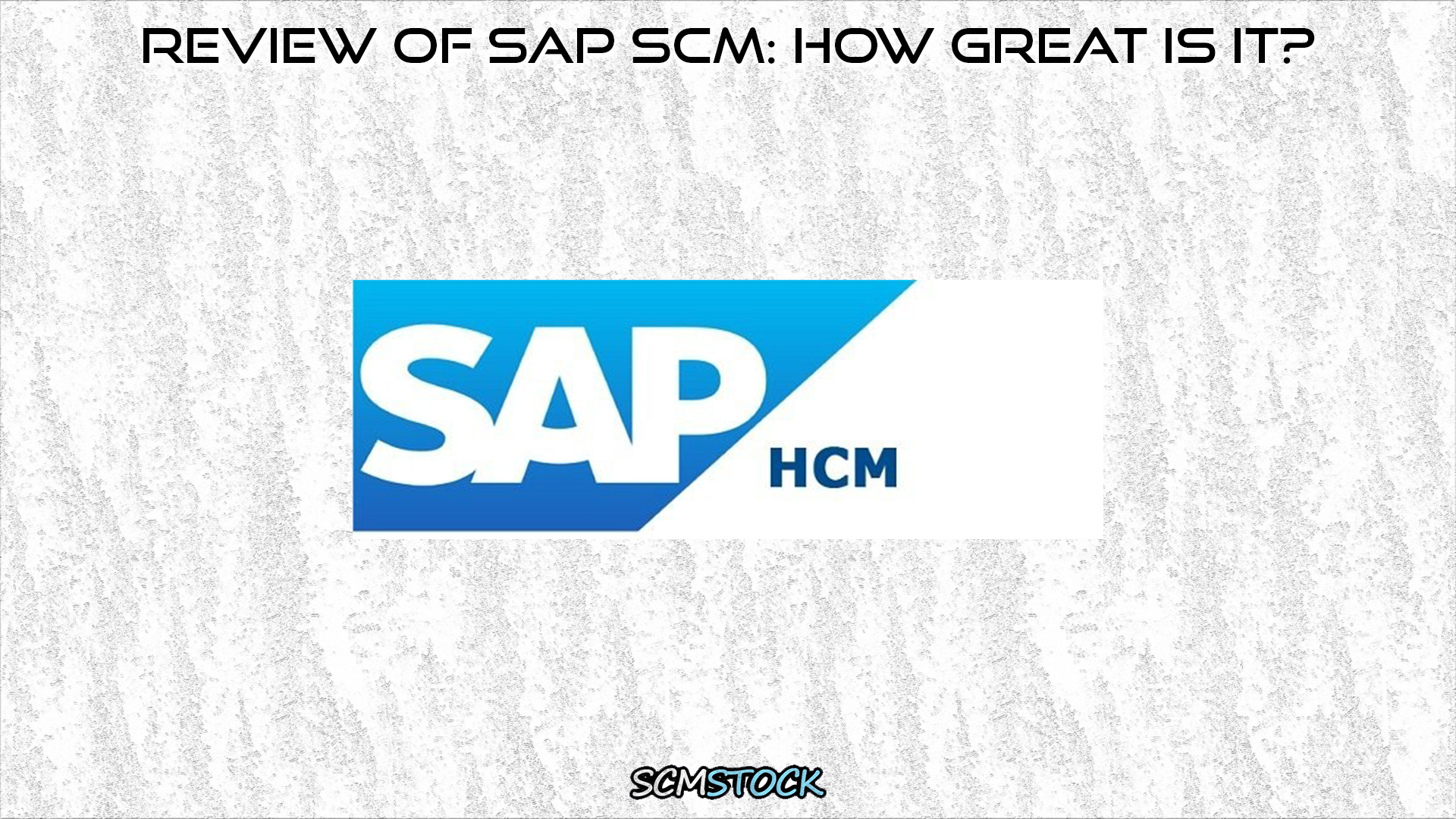In an era where supply chains are the lifeblood of global commerce, businesses are increasingly seeking innovative tools that can keep pace with the growing complexity of their operations.
Every link in the supply chain—be it procurement, production, or logistics—needs to be flawlessly coordinated to maintain the flow of goods and services across borders and markets.
Enter SAP Supply Chain Management (SCM), a solution that has not only captured the attention of industry leaders but also sparked considerable debate over its effectiveness.
Is SAP SCM the game-changing tool that it promises to be, or is it simply another software solution in an already crowded market? In this review, we’ll explore the ins and outs of SAP SCM, examining its key features, strengths, and potential drawbacks.
By the end, you’ll have a clear understanding of what SAP SCM can offer and whether it’s the right fit for your business needs.
What is SAP SCM?
SAP Supply Chain Management (SCM) is a robust module within SAP’s extensive enterprise resource planning (ERP) suite, designed to help organizations manage their supply chains more effectively.
SAP SCM covers a wide range of functionalities, including supply chain planning, demand forecasting, logistics management, and procurement.
It’s particularly known for its ability to integrate with other SAP modules, such as SAP ERP and SAP Advanced Planning and Optimization (APO), creating a unified ecosystem for businesses.
Key Features and Capabilities
These key features demonstrate SAP SCM’s comprehensive approach to supply chain management, offering tools that not only streamline operations but also provide the insights needed to stay competitive in a rapidly evolving market.
1. Supply Chain Planning
SAP SCM excels in supply chain planning, offering advanced tools to manage everything from demand forecasting to production scheduling.
Its real-time data processing allows businesses to anticipate needs and allocate resources efficiently, reducing the risk of shortages or excess inventory.
2. Supply Chain Visibility
One of the most critical aspects of any supply chain is visibility, and SAP SCM provides unparalleled end-to-end transparency.
This feature enables businesses to monitor every stage of the supply chain—from sourcing raw materials to delivering finished products.
With this visibility, companies can quickly identify and address bottlenecks, optimize performance, and improve overall efficiency.
3. Demand Forecasting
Predicting future demand is essential for balancing supply and demand, and SAP SCM integrates advanced analytics and machine learning to enhance accuracy.
These tools help businesses anticipate market trends, adjust production schedules, and reduce waste, ultimately leading to more cost-effective operations.
4. Inventory Management
Effective inventory management is at the heart of supply chain efficiency.
SAP SCM offers real-time inventory tracking, allowing businesses to maintain optimal stock levels, minimize carrying costs, and avoid the risks of overstocking or stockouts.
This capability ensures that products are available when and where they are needed, without tying up unnecessary capital.
5. Transportation Management
Transportation is a crucial element of the supply chain, and SAP SCM’s Transportation Management module is designed to optimize logistics.
From route planning and fleet management to ensuring timely deliveries, this feature helps businesses reduce transportation costs while improving delivery performance.
By integrating with other supply chain functions, it enables a seamless flow of goods from origin to destination.
Strengths of SAP SCM

These strengths highlight why SAP SCM is considered one of the leading solutions in the supply chain management space.
Its ability to integrate seamlessly with the broader SAP ecosystem, scale according to business needs, provide real-time analytics, and offer a proven track record of success make it a powerful tool for businesses looking to optimize their supply chain operations.
Whether managing a small, localized supply chain or a sprawling global network, SAP SCM delivers the capabilities needed to stay competitive in an ever-changing market.
1. Integration with SAP Ecosystem
One of the most compelling strengths of SAP SCM is its seamless integration within the broader SAP ecosystem.
For businesses already leveraging SAP’s enterprise resource planning (ERP) or finance modules, incorporating SAP SCM into their existing infrastructure is a straightforward process.
This integration allows for a unified, cohesive platform where data flows effortlessly between different departments and functions.
For instance, financial data from SAP’s finance module can be directly linked to supply chain operations, enabling more accurate cost analysis and budgeting.
Similarly, human resources data can be tied to production schedules, ensuring that workforce planning aligns with manufacturing needs.
This level of integration not only simplifies the implementation process but also enhances overall efficiency, as businesses can avoid the pitfalls of working with disjointed systems and instead benefit from a unified enterprise management solution.
2. Scalability
SAP SCM is built with scalability in mind, making it an ideal solution for businesses at any stage of growth.
Whether you’re a small business looking to improve basic supply chain operations or a large multinational corporation managing complex, global networks, SAP SCM can be tailored to meet your needs.
Its modular structure allows companies to implement only the functionalities that are necessary for their current operations, with the option to add more modules as the business grows.
This flexibility is particularly beneficial for companies in industries that experience rapid changes in scale, such as technology or consumer goods.
As business needs evolve, SAP SCM can expand alongside them, ensuring that the supply chain remains efficient and effective, regardless of size or complexity.
3. Real-time Analytics
In the modern business environment, where conditions can change in an instant, the ability to access and analyze real-time data is crucial.
SAP SCM excels in this area by providing powerful real-time analytics capabilities that allow companies to monitor and respond to supply chain dynamics as they happen.
For example, if a sudden spike in demand occurs, SAP SCM can quickly analyze the situation and suggest adjustments to production schedules or inventory levels to meet the new demand.
Similarly, if a disruption occurs in the supply chain—such as a delay in raw material delivery—the system can provide immediate insights into the potential impact and recommend alternative actions to mitigate the disruption.
This real-time responsiveness enables businesses to make data-driven decisions on the fly, reducing risks and capitalizing on opportunities more effectively.
4. Proven Track Record
SAP SCM’s longevity and widespread adoption in the market are strong indicators of its reliability and effectiveness.
With years of experience and development behind it, SAP SCM has been fine-tuned to meet the demands of a wide range of industries, from manufacturing and retail to healthcare and logistics.
Many of the world’s leading companies, including Fortune 500 giants, rely on SAP SCM to manage their complex supply chains.
This extensive use across various sectors is a testament to the system’s robustness and capability to handle diverse supply chain challenges.
Furthermore, SAP SCM’s proven track record means that it comes with a wealth of best practices, case studies, and a large community of users and experts.
This support network can be invaluable for new users, providing guidance and insights that can help them maximize the value of their SAP SCM implementation.
Potential Drawbacks of SAP SCM
These potential drawbacks highlight the importance of thorough evaluation and planning before implementing SAP SCM.
While the system offers significant benefits, it is crucial for businesses to weigh these against the challenges of complexity, cost, customization, implementation time, and vendor dependency.
For companies that can manage these drawbacks effectively, SAP SCM can be a transformative tool for supply chain management.
However, for others, these challenges may outweigh the advantages, leading to a consideration of alternative solutions.
1. Complexity and Learning Curve
While SAP SCM offers extensive functionality, this breadth can also be a double-edged sword.
The system’s complexity can make it challenging for organizations, especially those that are new to SAP, to implement and use effectively.
The initial setup often requires a deep understanding of both the software and the specific needs of the business. Additionally, ongoing management of the system may demand dedicated IT resources and expertise.
Training employees to use SAP SCM can be time-consuming, and without proper guidance, there is a risk that users may not fully utilize all the features, leading to suboptimal results.
2. Cost
Implementing SAP SCM can be a costly endeavor, particularly for small to mid-sized companies.
The total cost of ownership includes not only the licensing fees but also expenses related to implementation, customization, training, and ongoing maintenance. For businesses with limited budgets, these costs can be prohibitive.
Even for larger enterprises, the investment required for a full-scale SAP SCM deployment can be significant, making it essential for companies to carefully assess the expected return on investment before committing to the system.
3. Customization Needs
While SAP SCM is highly configurable, businesses with unique or specialized supply chain requirements may find that they need to invest in additional customization or third-party integrations to fully meet their needs.
Customization can be complex and costly, often requiring specialized expertise. Moreover, extensive customization can lead to longer implementation times and increased maintenance challenges.
Over time, heavily customized systems may also become more difficult to upgrade, as new versions of the software may not seamlessly integrate with the custom solutions that have been developed.
4. Implementation Time
Implementing SAP SCM is not a quick process. Depending on the size and complexity of the business, the deployment of SAP SCM can take several months to a few years.
This extended timeline can be a drawback for companies looking to quickly address supply chain challenges.
During the implementation phase, businesses may also face disruptions to their existing processes as they transition to the new system.
Additionally, the need for careful planning and testing means that any delays or issues during implementation can extend the timeline even further, potentially delaying the realization of the system’s benefits.
5. Vendor Lock-In
SAP SCM, like other enterprise software solutions from large vendors, can create a sense of vendor lock-in.
Once a business commits to SAP SCM, switching to a different system can be difficult and expensive due to the extensive integration, customization, and training investments already made.
This lock-in can limit flexibility, particularly if the business’s needs change over time or if they find that another solution might be better suited to their evolving requirements.
Additionally, reliance on a single vendor for multiple critical business functions can be risky if the vendor increases prices or if there are any changes in the vendor’s product strategy.
Conclusion
SAP SCM is a powerful tool that offers extensive capabilities for managing complex supply chains.
Its strengths lie in its deep integration with the SAP ecosystem, real-time analytics, and comprehensive functionality.
However, the complexity and cost associated with its implementation and maintenance mean that it may not be the right fit for every business.
For large enterprises with complex supply chains, SAP SCM can be an invaluable asset, driving efficiency and enabling better decision-making.
Smaller businesses, or those with less intricate supply chain needs, may find it more than they need—and more than they want to spend.
Ultimately, SAP SCM’s value depends on the specific needs and resources of the business considering it.
With the right expertise and investment, it can transform supply chain operations, but it’s not a one-size-fits-all solution.
Businesses must weigh its benefits against the costs and complexities to determine if it’s the right choice for them.
